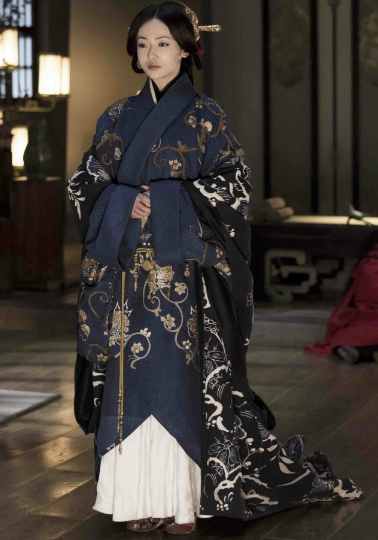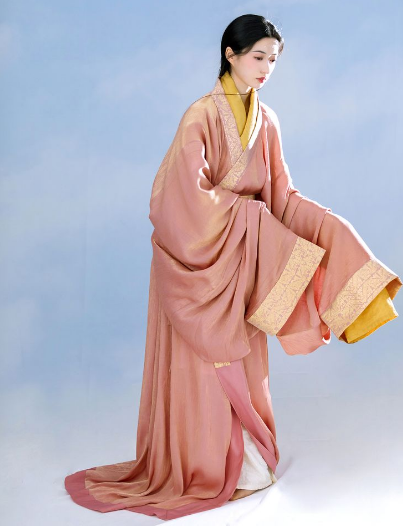Introduction to the Warring States Period
The Warring States Period, spanning from approximately 475 to 221 BCE, marks a time of intense military conflict and political fragmentation in ancient China. Seven powerful states emerged from the ashes of the once-dominant Zhou dynasty, relentlessly competing for supremacy. This era, preceding the unification under the Qin dynasty, saw not only advances in military tactics and government but also significant cultural and philosophical developments.
Overview of the Warring States Period
During this time, the realm of China experienced radical changes. The states of Qi, Chu, Yan, Han, Zhao, Wei, and Qin constantly engaged in warfare, with each seeking to annex the others. Innovations in military strategy and technology flourished, as illustrated by the writings in Sun Tzu’s “The Art of War”.
Administrative advancements were also notable. Land and people became the chess pieces of ambitious rulers, while iron casting led to improved weaponry and agricultural tools, boosting productivity. The population grew, and new philosophies, including Confucianism, Daoism, and Legalism, began to question the nature of power and ethics.

Significance of Costumes in the Warring States Culture
Costumes during the Warring States Period did more than serve as mere clothing; they were a visual language communicating status, profession, and regional identity. The elaborate dress of nobles was a stark contrast to the simple garments of peasants, reflecting the rigid social hierarchies of the time.
For the military, costumes varied in material quality and decoration to represent rank and function, with higher-ranking officers wearing more elaborate gear. For civilians, clothing styles varied significantly, with silk being a valued commodity for the elite, indicating wealth and influence. These costumes have been excavated in numerous archaeological findings, offering tangible evidence of the era’s complexity and sophistication.
Military Attire of the Warring States
The military attire of the Warring States was not only functional but also a matter of pride and prestige. Soldiers were equipped according to their rank and role, ensuring that they could be easily identified in the chaos of battle. High-ranking officers wore intricately designed armor that set them apart from the enlisted soldiers.
Armor and Protective Gear
Armor of the era was primarily made of leather and bronze, with advancements in iron metallurgy introducing iron components. A typical set of armor could weigh from 20 to 30 kilograms, a significant load that soldiers trained to bear. Helmets often featured elaborate designs, from simple bronze caps to more protective headgear that covered the face and neck.
Infantry soldiers typically wore lighter armor for better mobility. They carried shields made of wood and leather, vital for deflecting arrows and blows. Cavalry units, crucial in the Warring States tactics, donned more elaborate armor for both rider and horse, reflecting their importance and the wealth of their sponsors.
Symbols and Ornaments of Rank and Faction
The insignia and emblems adorning military attire carried great significance. These symbols identified a soldier’s state affiliation and rank within the army. Higher ranks boasted finer materials and more decoration, often with jade and gold inlays. Jade ornaments were especially prized, symbolizing nobility and virtue.
Each state had its distinctive emblem that soldiers wore proudly into battle. The colors of these emblems, coupled with flags and banners, were not merely decorative; they served as important identifiers in the heat of combat. Commanders, who could afford the cost, often customized their armor to showcase personal achievements and status, effectively turning their battle gear into walking chronicles of their military prowess.
Civilian Clothing Styles
The Warring States period showcased a stark contrast in clothing styles, where societal position dictated one’s attire. Functionality ruled the commoners’ choices, whereas nobility flaunted wealth through fashion.
Everyday Wear of Commoners
Common people, the pillars of society, opted for hard-wearing hemp or ramie fabrics. Men typically donned trousers and tunics, secured with sturdy belts, whereas women preferred long, practical dresses. Given the need for longevity, these garments boasted robust quality. Homespun materials kept clothing costs low, emphasizing function over finesse.
In response to harsh winters, commoners layered with cloaks or padded jackets for warmth. Footwear remained utilitarian, crafted from straw or cloth, enduring daily toil.
Fashion Among the Nobility and Royalty
Conversely, nobility and royalty turned to fashion as a canvas of opulence. Silk reigned supreme in their wardrobes, often adorned with elaborate embroidery. Nobles allocated considerable funds to their attire, showcasing wealth with fine patterns and luxurious embellishments.
The price tags on noble garments soared, thanks to premium silks and accents like jade or golden threads. Owning diverse silk outfits signaled a noble’s vast resources. Women of high birth swathed themselves in flowing silk robes, while men layered their attire, often crowning it with a sash-tied overcoat. Such sartorial choices transcended mere aesthetics, subtly communicating political allegiances or philosophical leanings.
Textiles and Materials Used in Costumes
The textiles and materials that fashioned Warring States attire were as varied as they were sophisticated. They bore the mark of the wearer’s status and sometimes even their geographic origins.
Common Fabrics and Their Sources
Hemp and ramie, sourced from local crops, served as the mainstays for commoners’ clothing. These fibers, known for their durability, withstood the test of daily labor and frequent wear. Silk, however, was the choice for those of higher status. Derived from the painstaking labor of sericulture, silk production was a costly affair, often reserved for the elite.
The quality of these materials was high, ensuring that garments maintained their form and function over years of use. While commoners’ attire favored utility, costing only what a day’s work could cover, nobility’s silk attires reflected their ability to invest heavily in luxury.
Dyes and Colors: Meanings and Methods
Colors in the Warring States period bore deep significance, often indicating the wearer’s status or allegiance. Plant-based dyes were common, extracting vibrant hues from indigo or madder plants. The wealthy might afford more exotic dyes, which gave rise to purples and crimsons, symbols of wealth and power.
The dyeing process itself was labor-intensive, contributing to the garment’s final cost. A single piece of dyed silk could represent weeks of work. These colors did more than beautify; they conveyed messages, with certain shades signifying mourning, royalty, or even philosophical schools. This rich palette ensured that clothing was not just protective but also a form of expression.
Influence of Geography on Attire
The diverse landscapes of the Warring States period shaped the attire of its people profoundly. From the cold northern plains to the warm southern river valleys, geographical diversity demanded a variety of clothing adaptations.

Regional Variations in Costume
In the north, thick, padded garments shielded the body from biting winds and snow. People in these areas often layered animal skins and furs over their usual hemp tunics. To the south, lighter silks and breathable linens prevailed, suitable for the humid and hot climate. These regional disparities not only reflected practical needs but also influenced the cultural identities of each state.
Silk, while prevalent in wealthier eastern regions, was a rare luxury in the more austere west. The price of clothing thus varied greatly by region, with the cost of a full silk outfit in the east equating to several months of a commoner’s earnings.
Adaptations to Climate and Terrain
People adapted their footwear based on the terrain they inhabited. In mountainous regions, sturdy boots provided the necessary grip and durability. The flatlands saw the use of softer shoes, suitable for long hours of walking or standing in fields.
Climatic demands also dictated the choice and quality of materials. In wetter areas, clothing needed frequent replacing due to moisture damage, impacting the longevity of garments. Conversely, in drier zones, the longevity of a well-made hemp garment could span several years, making them a cost-effective choice for the populace.
Legacy and Evolution of Warring States Costumes
The sartorial legacy of the Warring States period extends far beyond its historical timeframe, influencing Chinese culture and fashion for centuries.
Impact on Subsequent Dynasties
Subsequent dynasties often looked back to the Warring States for inspiration, adapting its styles with contemporary twists. For instance, the Han dynasty continued the use of silk but made the clothing more form-fitting and added distinct Han motifs. Each dynasty contributed new elements to the attire, such as unique embroidery patterns or hat shapes, while retaining the basic structure pioneered during the Warring States era.
Costumes from the Warring States period became benchmarks for ceremonial garb, with their symbolism and design elements enduring. The cost and value of silk garments remained high, signifying status and wealth just as they had centuries before.
Representations in Modern Media and Culture
Modern media often romanticizes the costumes of the Warring States period. Films, TV series, and video games set in ancient China showcase elaborate reconstructions of these historical garments, albeit with creative liberties for visual spectacle.
These representations contribute to a collective memory of the period’s fashion, although they sometimes anachronistically enhance the quality and opulence of the attire. Such depictions ensure that the costumes, once practical daily wear, now serve as cultural icons, encapsulating a bygone era of Chinese history.